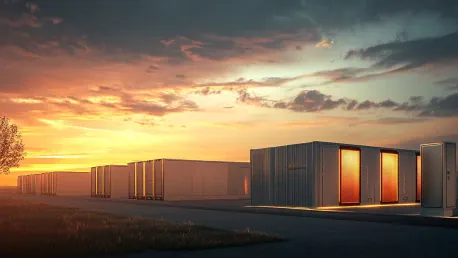The U.S. power generation capacity is set to experience substantial growth in 2024, driven largely by significant investments in solar energy and battery storage solutions, according to recent projections from the Energy Information Administration (EIA). The data points to a 55% increase over the current year, with expected capacity additions reaching 62.8 gigawatts (GW) compared to 2023’s 40.4 GW.
Solar and Battery Storage Lead the Way
In the first half of 2024, developers and utilities have already activated 20.2 GW of new capacity, with solar energy accounting for a solid 12 GW, representing 59% of this new capacity. Texas and Florida are frontrunners in this solar surge, contributing to 38% of the total increase in the U.S. In addition to solar, battery storage has also seen impressive growth, with 4.2 GW installed primarily across California, Texas, Arizona, and Nevada. Together, these states are strengthening the grid’s resilience and reliability.
Wind, Nuclear and Additional Capacity
While solar and battery storage are leading the charge, wind and nuclear power also made notable contributions. Wind energy installations added 2.5 GW, while nuclear power contributed 1.1 GW to the grid. The second half of 2024 is anticipated to see another robust wave of installations, projected to add 42.6 GW, potentially establishing new records for both solar and battery storage installations.
Slowing Power Plant Retirements
The first half of 2024 has seen a reduction in power plant retirements, with only 5.1 GW of capacity taken offline compared to 9.2 GW in the first half of the previous year. The retired capacity was predominantly composed of gas-fired and coal-fired plants. For the remainder of the year, the EIA anticipates an additional 2.4 GW of retirements, again focusing on coal and gas-fired facilities. This slowdown indicates a strategic shift in favor of retaining operational plants amidst the transition to renewable energy sources.
A Strong Shift Toward Renewable Energy
The overarching trend for 2024 underscores a decisive pivot towards renewable energy sources, evidenced by the dominant role of solar and battery storage in new capacity additions. The notable contributions from key states such as Texas and Florida highlight regional leadership in this energy transition. The slowdown in the retirement of traditional power plants also suggests a deliberate and balanced approach to integrating renewables while maintaining energy reliability.
Conclusion: Investing in a Sustainable Future
The U.S. is gearing up for a notable expansion in its power generation capacity in 2024, primarily fueled by significant investments in solar energy and battery storage systems, as projected by the Energy Information Administration (EIA). The forecast indicates a potential 55% rise in capacity compared to the current year, with a substantial increase in expected capacity additions, increasing from 40.4 gigawatts (GW) in 2023 to 62.8 GW in 2024. This growth underscores a decisive shift towards renewable energy sources, emphasizing the role of solar power and advanced energy storage technologies in the nation’s future energy landscape. The considerable rise in capacity is not only a testament to the ongoing commitment to reducing carbon emissions but also highlights the technological advancements and investments that are reshaping the energy sector. Enhanced energy storage solutions are crucial in addressing the intermittency of renewable sources, ensuring a more reliable and resilient power grid. As the U.S. continues to invest in sustainable energy infrastructure, these efforts pave the way for a cleaner, more sustainable energy future, providing substantial environmental and economic benefits.









